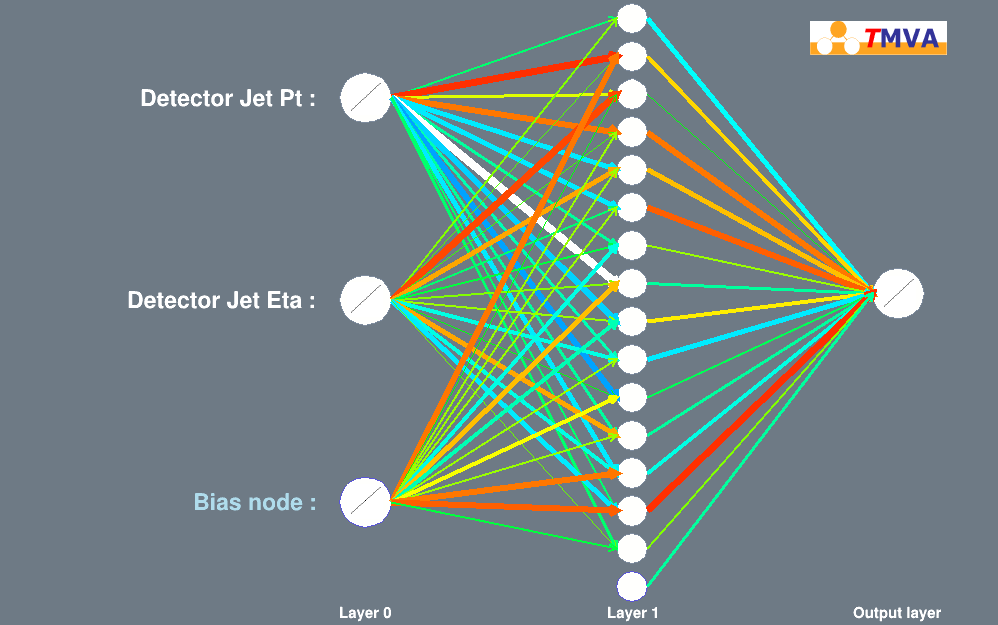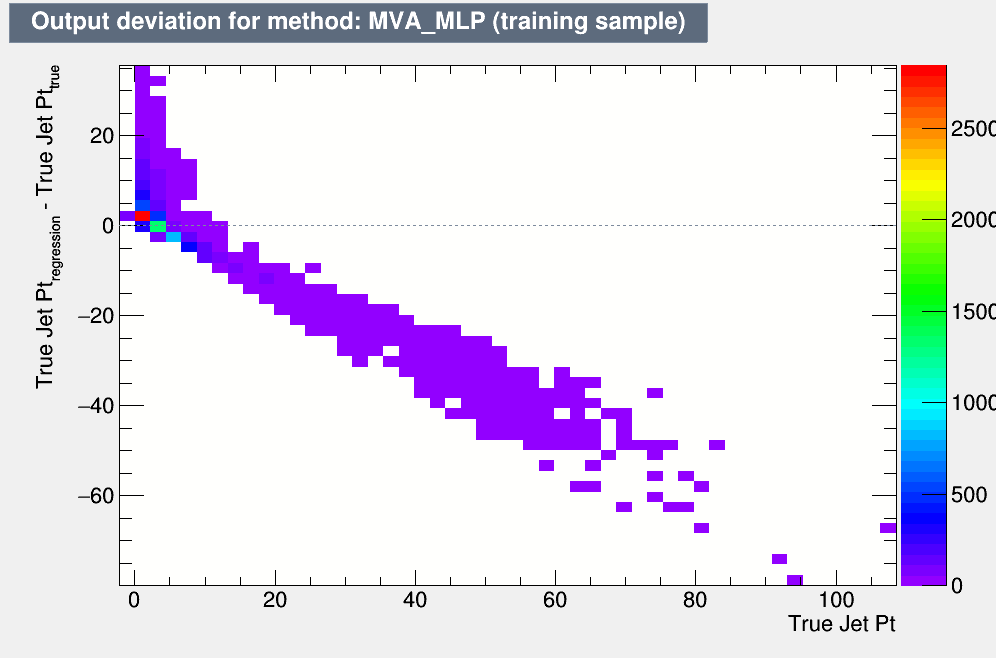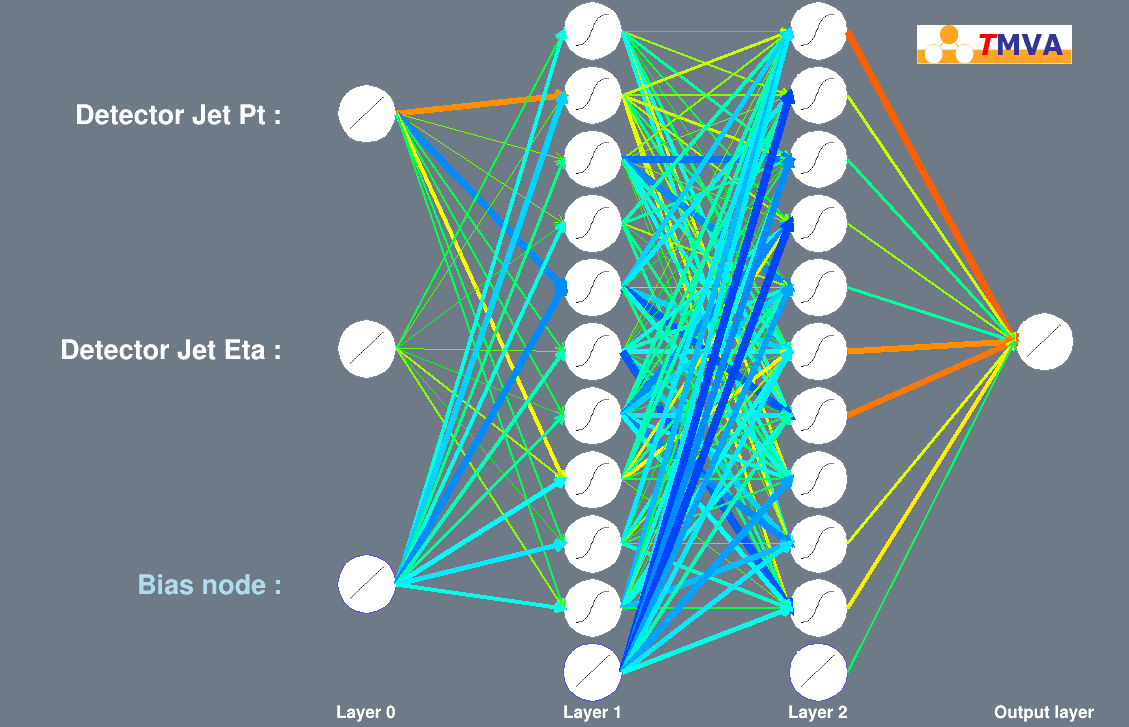TMVA Regression for Jets
Updated on Fri, 2019-08-09 17:32. Originally created by rsalinas on 2019-08-09 17:28.






Comparisons

A lot of the methods undershot the true pt level but that could be due to insufficient events in the training, the learning rate, hidden layers, etc... The goal now is to figure out this "general" unfolding, compare it to the RooUnfold method, and then proceed to do this for hadrons-in-jets. Supplementary, how different input variables affect the regression. Exciting!
This is a continuation of the previous blog entry where only one pt bin was considered. In this analysis, I looped over all the pt bins from the Monte Carlo and converted the variables into the TTree format. I trained the regression with 10000 events and tested with 54438 events.
- Where to find the code for this -> /star/u/rsalinas/
- To produce this output for this analysis, run the following:
- ./star/u/rsalinas/ALL.sh
- Produces the files tree_fileD.root & tree_fileP.root
- scp -p username@rftpexp.rhic.bnl.gov:path/on/RCF path/to/my/machine -> to copy to your machine
- root -l TMVARegpract.C\(\"MLP,MLP0,DNN_CPU\"\) -> do this on your machine with the attached TMVA regression .C file
- MLP
- Activation Function: sigmoid
- Hidden layers: 10,10
- Learning rate: .2
- MLP0
- Activation Function: tanh
- Hidden layers: 15
- Learning rate: .001
- The regression outputs produced and in TMVARegprac_embedding.root when you run the TMVA regression
- MLP
- ./star/u/rsalinas/ALL.sh
Variables
Input Variables
- dJetPt
- dJetEta
Target Variable
- pJetPt (particle)

Regression Results
Each method varied due to different parametrization but there is still a lot to tune and different parameters to include that could perhaps help with the regression.
DNN_CPU

MLP0


MLP


Convergence
To avoid over training, TMVA provides a convergence test for the test and train samples. It shows agreement in convergence which implies there is hardly any over training and the MLP method seems to work fine in that aspect.

Comparisons
When comparing the regression outputs, you can run the following:
- root -l plot_regression.C (on your machine)
- From the following plots, you can see the training regression of the different methods:

A lot of the methods undershot the true pt level but that could be due to insufficient events in the training, the learning rate, hidden layers, etc... The goal now is to figure out this "general" unfolding, compare it to the RooUnfold method, and then proceed to do this for hadrons-in-jets. Supplementary, how different input variables affect the regression. Exciting!
»
- rsalinas's blog
- Login or register to post comments
